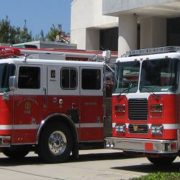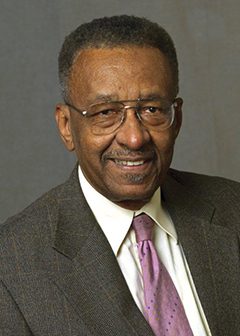
A DEMOCRACY WILL CONTINUE TO EXIST UP UNTIL THE TIME THE VOTERS DISCOVER THAT THEY CAN VOTE THEMSELVES GENEROUS GIFTS FROM THE PUBLIC TREASURY. FROM THAT MOMENT ON, THE MAJORITY WILL ALWAYS VOTE FOR THE CANDIDATES WHO PROMISE THE MOST BENEFITS FROM THE PUBLIC TREASURY, AND EVENTUALLY THIS DEMOCRACY BECOMES A DICTATORSHIP
—ALEXANDER TYLER (1887) Scottish history professor
CANDIDATES FORUM
NOVEMBER COUNCIL ELECTION
(MARRIOTT HOTEL – THURSDAY, AUGUST 25, 2011, 6 P.M.)
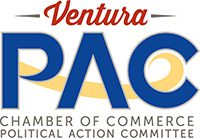 The Political Action Committee (PAC) of the Ventura Chamber of Commerce will present a candidates forum to the citizens of Ventura, at the Marriott Beach Hotel, located at 2055 East Harbor Boulevard, Ventura, commencing at 7 P.M.
The Political Action Committee (PAC) of the Ventura Chamber of Commerce will present a candidates forum to the citizens of Ventura, at the Marriott Beach Hotel, located at 2055 East Harbor Boulevard, Ventura, commencing at 7 P.M.
A City Council election is set for November 8, 2011. Three council seats will be open in this election. The council members up for reelection are Councilwoman Christy Weir and Councilman Carl Morehouse. Mayor Bill Fulton has announced that he will not stand for election.
The candidates for this election, and who will be appearing at this forum to speak and answer a series of questions are:
| START |
CANDIDATE |
|
START |
CANDIDATE |
| 6:00 |
Melody Baker |
|
7:00 |
15-minute Break |
| 6:10 |
Brian Lee Rencher |
|
7:15 |
Martin Armstrong |
| 6:20 |
Danny Carrillo |
|
7:25 |
William Knox |
| 6:30 |
Ed Alamillo |
|
7:35 |
Cheryl Heitmann |
| 6:40 |
Ken Cozzens |
|
7:45 |
Carl Morehouse |
| 6:50 |
Carla Bonney |
|
7:55 |
Christy Weir |
This is the second time that the Chamber PAC has presented this event, and all citizens are encouraged to attend. It is probably the only time when you will be able to compare the candidates and compare their answers to set questions about their platform.
THE WAV
[HORNSWOGGELED AND SKINNED AGAIN ?]
“Hornswoggle”, slang circa 1829. A word to describe one who has been bamboozled. Synonyms: beguile, bluff, buffalo, burn, catch, con, cozen, delude, dupe, fake out, fool, gaff, gammon, gull, have, have on [chiefly British], hoax, hoodwink, deceive, humbug, juggle, misguide, misinform, mislead, snooker, snow, spoof, string along, sucker, suck in, take in, trick

Were Ventura taxpayers hornswoggeled by the WAV Building?
On your next walk go to the corner of Thompson boulevard and Ventura Avenue to view the WAV, a Ventura City Redevelopment project located at 175 S. Ventura Avenue. You can also go on line and conduct a virtual tour by going here.
The advertisements from the City folks, and its developer, is that this WAV project represents “the vanguard of innovative, sustainable, cultural facilities. The Working Artists of Ventura will be a $57 million, state-of-the-art community designed for artists and creative businesses”. This project, according to Mayor Fulton and the City Council, acting as the Redevelopment Agency, was built without the use of taxpayer money, would produce 25,000 visitors a year and would stimulate the local economy resulting in $75,000,000 in new investments.
WAV Building History

The WAV Building has convoluted financing that puts Ventura taxpayers at risk.
The project planning began in 2005, and was completed in October, 2009. It was built on a 1.62 acre site at the corner of Thompson Boulevard and Ventura. The land was purchased by the City RDA at a cost of $1.5 million using tax (RDA) money. The concept was the “revitalization of underutilized sites and the construction of affordable housing” through the Ventura Redevelopment Agency. The project was to consist of 54 residential units for low income artists, 15 units for the homeless, 13 market rate condominiums and 6,000 square feet of commercial space determined by the developer to be “arts-friendly”. In addition to the land cost of $1.5 million the City loaned the “developer” $1.5. The total project ended up costing $ 68,000,000.
Planning started with a $400,000 loan to a company called Arts Space Inc. A person named Chris Velasco was the project manager for that company, however he left that company and formed his own Minnesota corporation called Projects Linking Arts, Community and Environment (PLACE), with himself as the owner. The other stockholders in that company have not been determined.
The Convoluted Path That Started the WAV Project
The first step was the preparation of a Disposition and Development Agreement, which was executed by PLACE and the Redevelopment Agency of the City of San Buenaventura (RDA) on November 20, 2006. This contract was amended on October 4, 2007 and again on February 1, 2008. To start the project the RDA committed to give and/or loan the Developer $4,358,000. A summary of the financial details of that contract is as follows:
- The RDA agreed to sell the land they purchased at a cost of $1,500,000 to the developer for $1.
- The RDA would loan the Developer (PLACE) $1,500,000 (including the $400,000 originally loaned to Arts Space) for development costs.
- The RDA would loan another $1,358,000 to the Developer so that they could pay the RDA rent to itself for a parking facility adjacent to the WAV project. A lease was then executed providing for a 35-year lease at a rental value of $1 per year.
- The Developer was to start the project by March 31, 2008.
- The City agreed to transfer the transfer of the 13 condominiums from PLACE to WAV CONDOMINIUMS, a California Limited Liability Company, whose members are Crest of WAV Partners LLC and JSCO WAV Homes LLC .
* The San Buenaventura Redevelopment (RDA) agency is a political entity separate and apart from the City of San Buena Ventura. The City Council and the people who run the City are the same people that run the RDA.
PLACE is a Minnesota corporation, owned by Chris Velasco, with an address at 300 Lumber Exchange 10 South 5th, Minneapolis, Minnesota. WAV CONDOMINIUMS LLC and WAV APARTMENTS, a limited partnership owned by WAV CONDOMINIUMS LLC are all located at the same address and are operated by Chris Velasco. The other partner in this is JSCO VENTURA, LLC, a California limited liability company operated by John Stewart Company, another California Corporation, with offices in San Francisco.
WAV Building Repayment Plan, As We Know It Now
The identity of these various business entities becomes relevant because to get some of our tax money back the RDA obtained a promissory note for $2,858,000 dated February 1, 2008, by the terms of which WAV PARTNERS and JSCO VENTURA, LLC, would pay the money back in 55 years and bear 3% simple interest. Of course the ability to recover that money depends upon the ability of these new business entities to pay the debt.
The principal and accrued interest on this loan is to be paid by 2063, but the amount to be paid depends on whether these companies have any “surplus cash” as that is defined in the contract. That sum consists of all of the income these companies receive for the WAV housing project less their operating costs annually, a property management fee of $30,000 a year, which will increase annually by 3%, reasonable developer fees and any principal and interest payments approved by the RDA. This promissory note was not signed by Chris Velasco as an individual nor by The John Stewart Company. There are no individuals responsible for this note, nor any company, such as John Stewart Company ( a potential deep pocket) to guarantee repayment. What money will be paid in 55 years, if any, is impossible to predict. If there is no profit they do not have to pay the money back.
Still Much To Be Uncovered
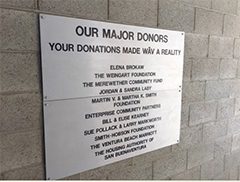
The list of principal contributors to the WAV Building. It’s political spin to think these groups financed it all.
RES PUBLICA is in the process of trying to obtain a current income and expense statement in order to determine if the low income housing project is working financially. What is known at this stage is: (1) none of the 6000 square foot business space has been leased; (2) none of the 13 condominiums have been sold; (3) the RDA loan of $2.4 million, secured by a second trust deed on the condominium part of the project only, had to be renegotiated with JP MORGAN CHASE and CITI BANK last month because the banks’ $4.2 million construction loans, secured by a 1st trust deed, which are senior to the RDA loan, were about to be foreclosed. That did not happen fortunately because the banks’ agreed to extend the loan for another 5 years. The RDA is still in a second trust deed position and will lose this money through foreclosure if the condominiums do not sell.
As for the claim that this project was built without using tax money it is political spinning at best. All that can be said is that the money spent by the RDA (our City Council and City Manger) did not come from the City general fund. For those who prefer “plain-speak”, the reality is that with the exception of the bank loans, all of this money came from money paid by the citizens to Federal, State and local governments, and from a $25,000,000 Federal tax credit purchased by Union Bank of California.
EDITORS COMMENT
The City Manger, City Council and people at City Hall running this project might argue that it is very easy to “Monday morning quarterback” on a project that began 6 years ago, or wring their hands and despair that nobody could have anticipated the situation with this economy?
The answer is that even in a good economy, this situation was bad from the beginning. It was predicable, regardless of the timing, that citizens would not spend over $1.0 million for a condominium with a view of the freeway to the South, the Strong Steel building to the East and located on the top floor of a low income housing project. The cost per unit was too great and the desirability was questionable. The City Manger and members of city council acting as the RDA were either grossly negligent or they were hornswoggeled. The taxpayers were skinned.
In the private sector, when a so-called “good deal” goes bad, people lose their jobs. In the public sector, nobody is held accountable and elected officials either choose not to run again, or they run but blame their fellow council members.
CHOOSE YOUR NEW COUNCIL MEMBERS CAREFULLY !
Editors:
B. Alviani K. Corse T. Cook
J. Tingstrom R. Mccord S. Doll
For more information like this, subscribe to our newsletter, Res Publica. Click here to enter your name and email address.




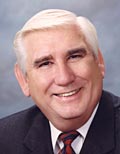





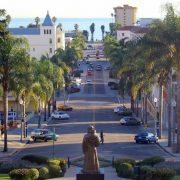




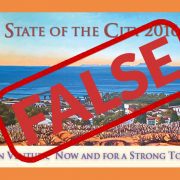

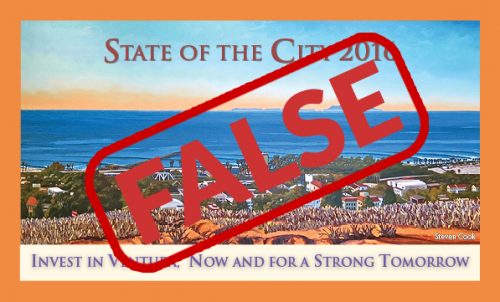





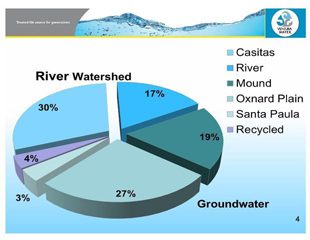





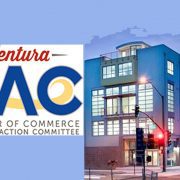

 The Political Action Committee (PAC) of the Ventura Chamber of Commerce will present a candidates forum to the citizens of Ventura, at the Marriott Beach Hotel, located at 2055 East Harbor Boulevard, Ventura, commencing at 7 P.M.
The Political Action Committee (PAC) of the Ventura Chamber of Commerce will present a candidates forum to the citizens of Ventura, at the Marriott Beach Hotel, located at 2055 East Harbor Boulevard, Ventura, commencing at 7 P.M.






